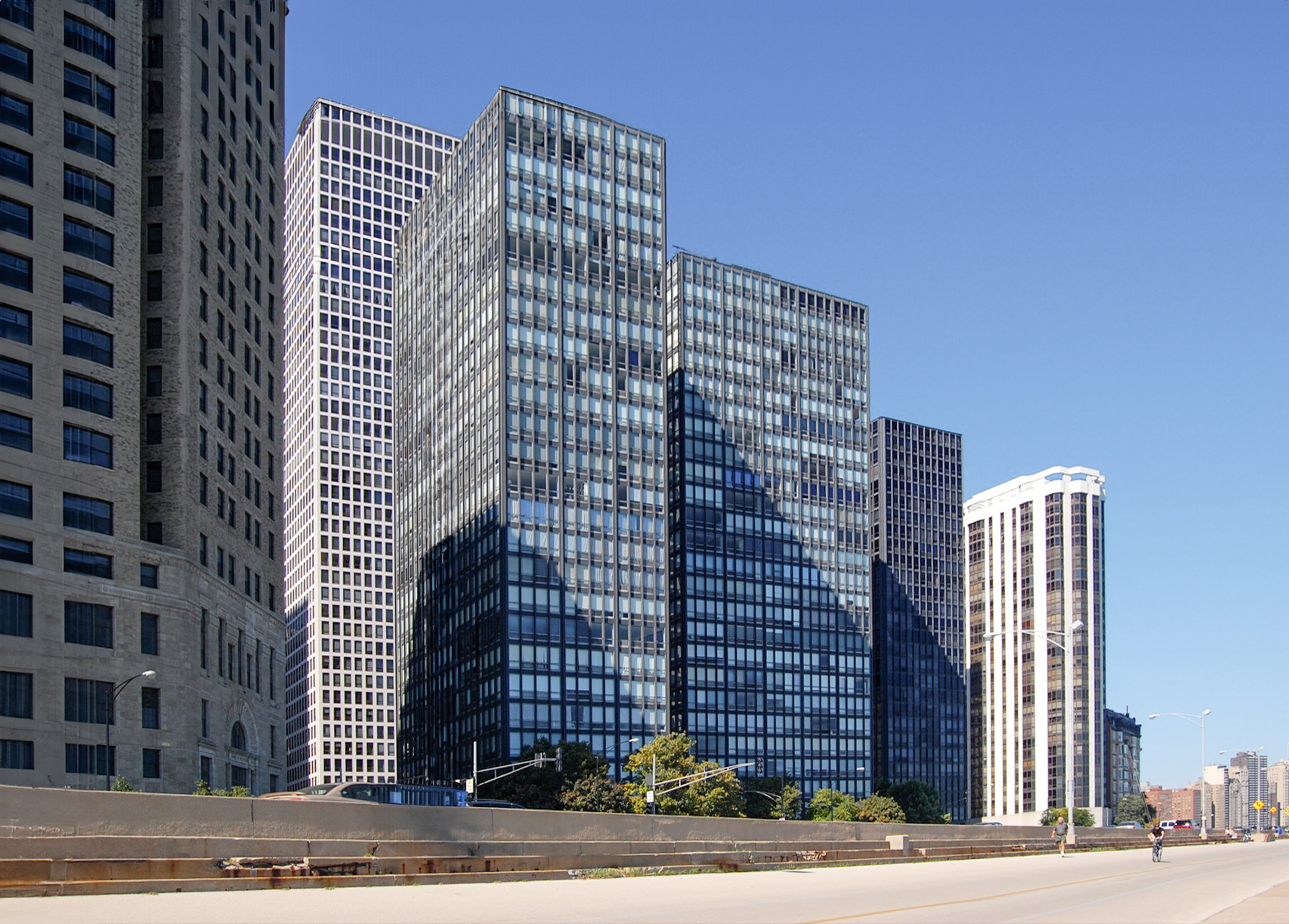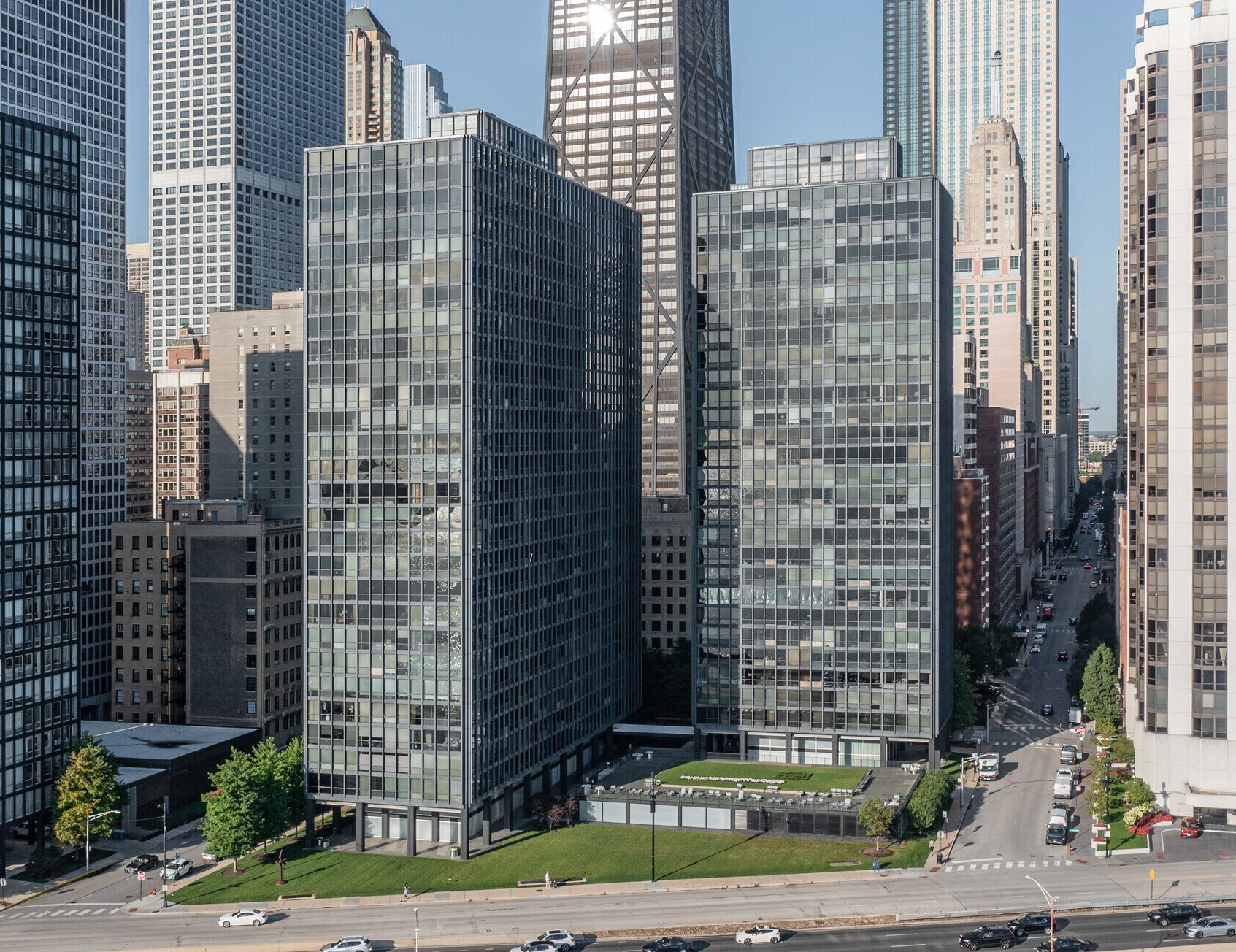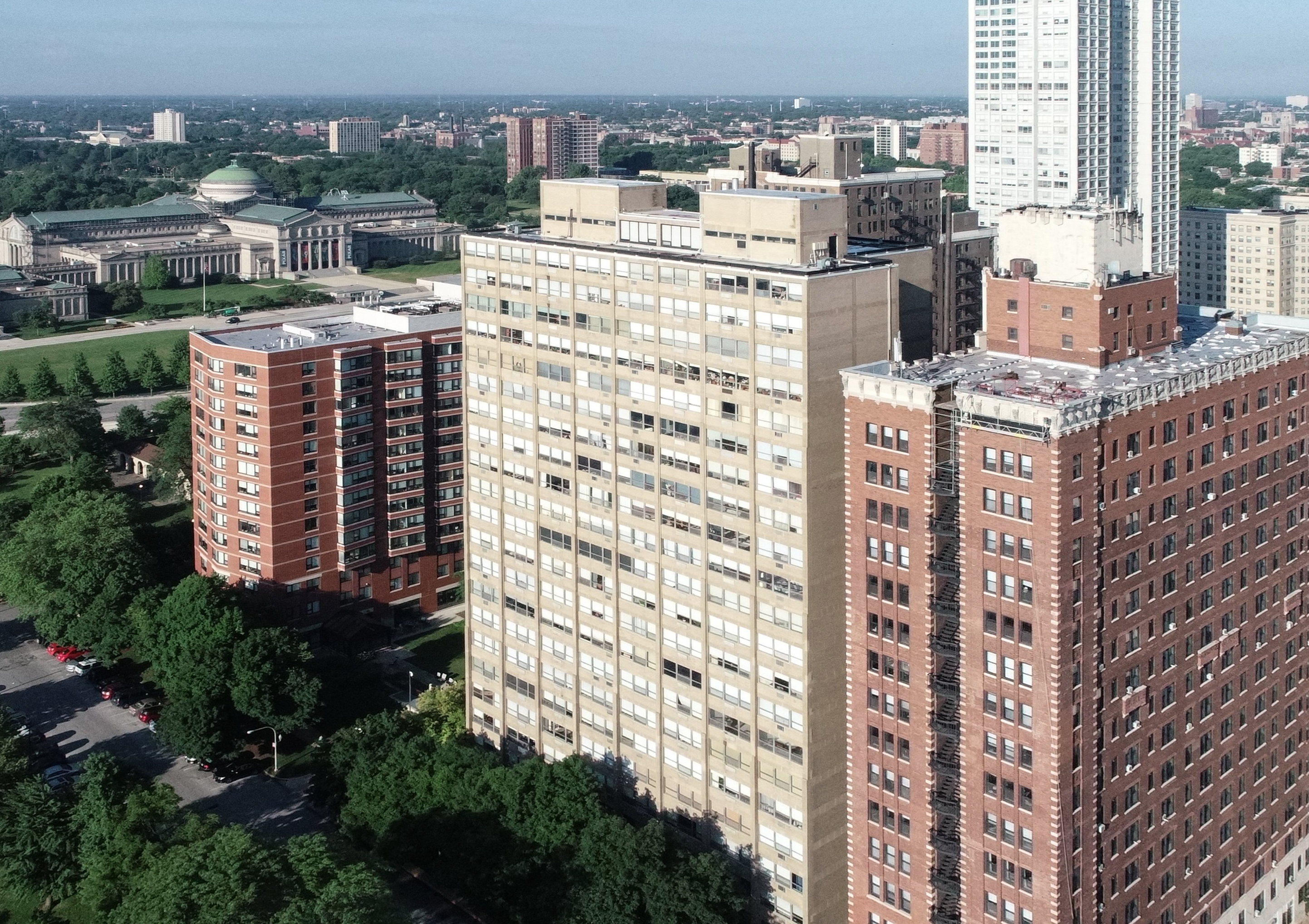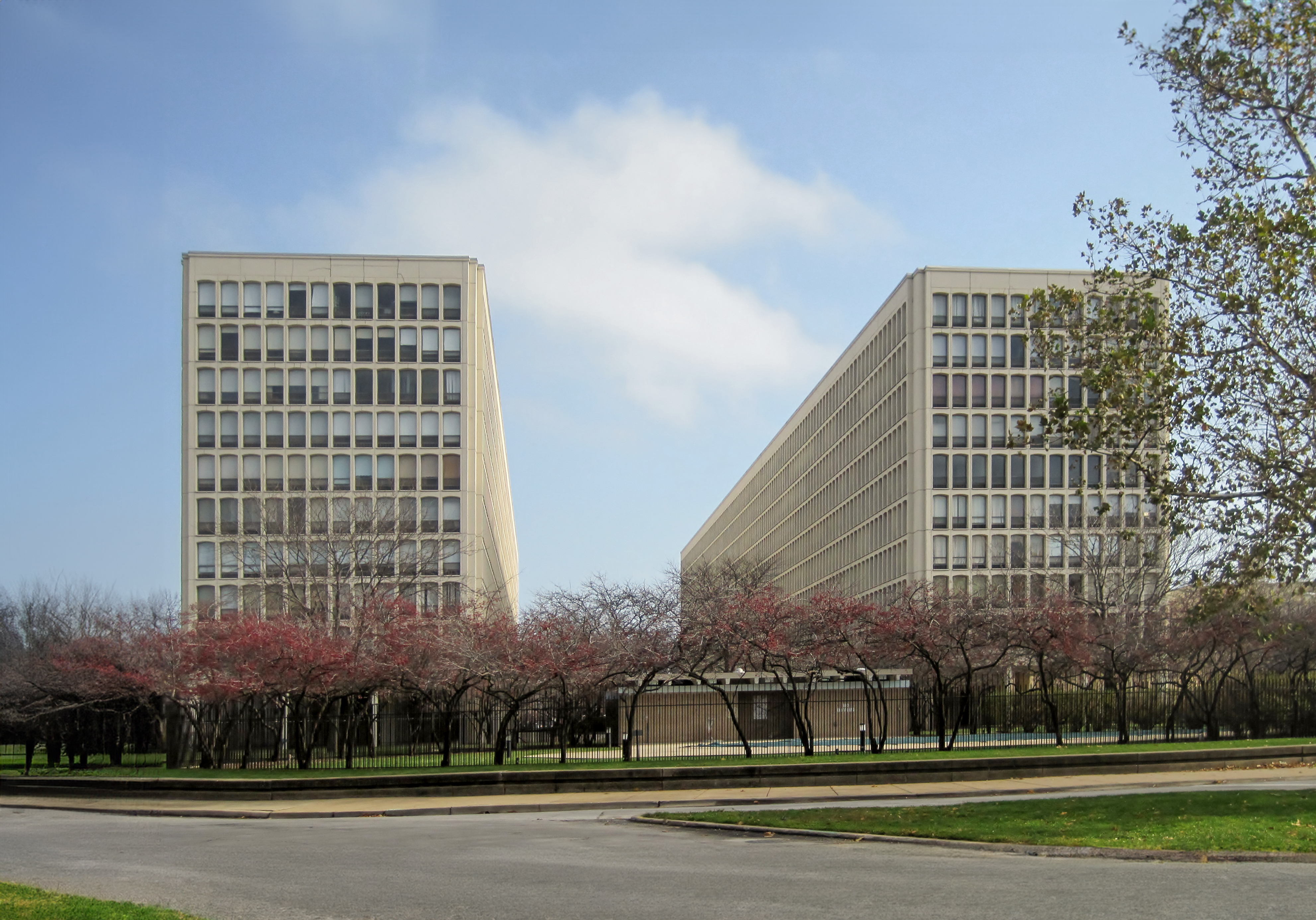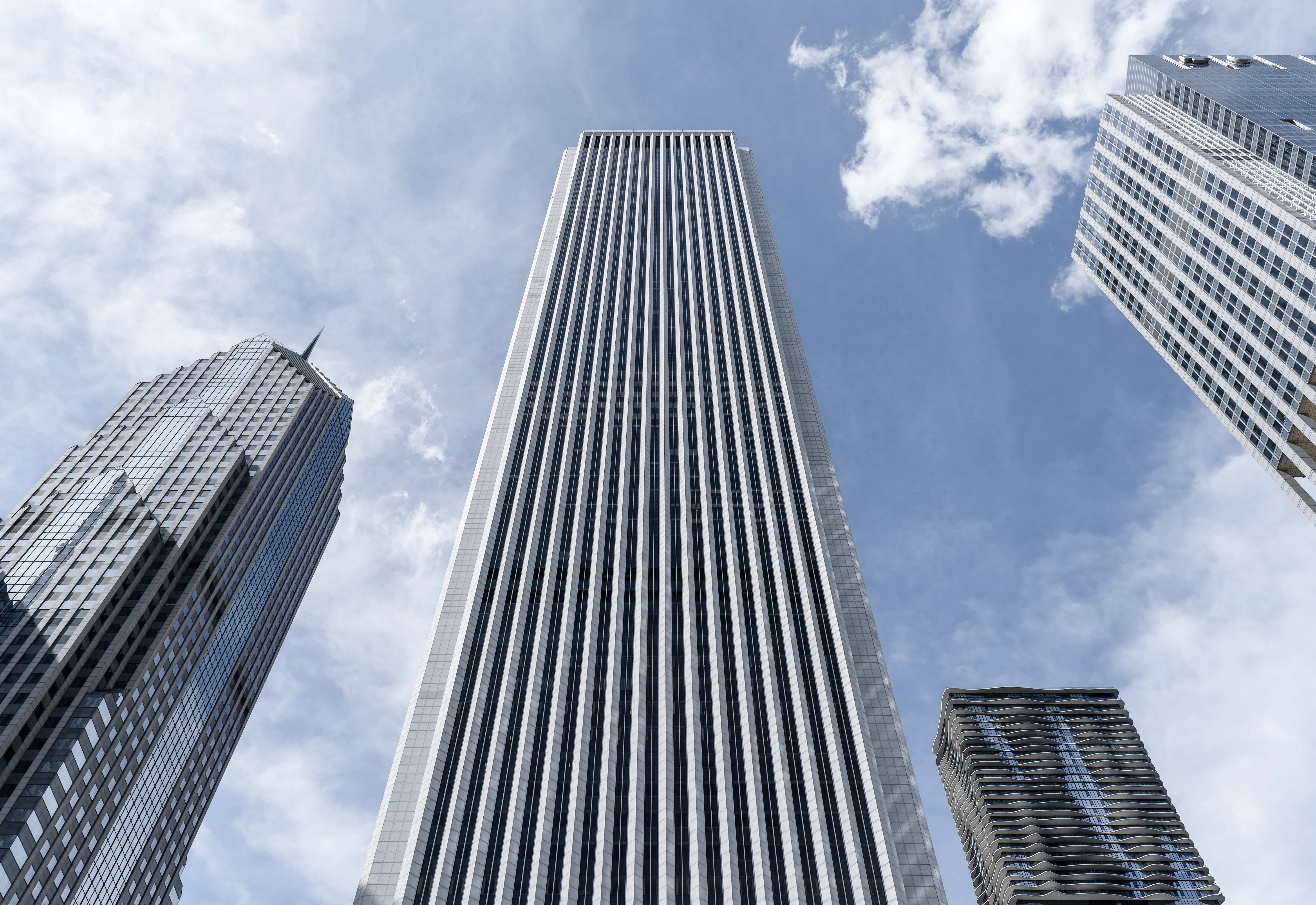The Chase Tower is an International Style skyscraper designed by Charles Murphy, in association with Perkins and Will, and built between 1964 and 1969 in Chicago, IL.
Chase Tower is not the only name you might know this building by though. It is common for companies to want to attach their names to iconic buildings when they move in, or for the general public to come up with nicknames, and this one is no exception. The building has changed names several times over the years, and is also known as:
- One First National Bank between 1969 and 1998.
- One First National Plaza between 1969 and 1998.
- Bank One Tower between 1998 and 2005.
- Chase Tower from 2005 until this day.
Its precise street address is 10 S Dearborn St, Chicago, IL. You can also find it on the map here.
The project takes up the entire block, although the building doesn't. The project included a public plaza to go with the building from the very begining, just like the Seagram Building did a few years earlier in New York. In this particular case the plaza sunks beneath the street level, creating a more elaborate entrance to the building.

